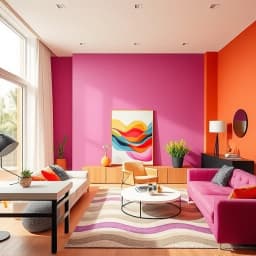
Concept Statement Interior Design
Find this useful? Bookmark ( CTRL/CMD + D ) for quick access!
Try an example:
Residential Space Planning
Commercial Office Design
Sustainable Interior Concepts
Luxury Home Styling
Minimalist Room Layout
Color Palette Development
Explore Similar Tools
Recent Generations
the amount paid directly to you. Yes it is possible in future cases to request direct payment to the provider, Rephrase and give me polished email.
we have processed the claim as per the attachments in the claim submission we have processedthe invoice for Saul Holding. We dont have invoice for the Salofalk.
this additional information is very important. this adiitional information was requested by our clinical team. Without clinical review claim not be paid so please share the below additional information
Concept Statement Interior Design
Concept Statement Interior Design is a powerful AI-powered tool that helps users create compelling design concepts with ease. This innovative solution combines advanced algorithms with user-friendly interfaces to deliver stunning interior design proposals that resonate with clients and stakeholders.
Key Capabilities
- Automated Concept Generation with tailored design themes that reflect client preferences and current trends.
- Visual Mood Board Creation enabling users to compile images, colors, and textures seamlessly for a cohesive presentation.
- Client Collaboration Tools for real-time feedback and adjustments, ensuring that designs align with client expectations.
- Cost Estimation Features that provide budget-friendly options while maintaining aesthetic integrity.
Who It's For
Designed for interior designers, architects, and real estate professionals, Concept Statement Interior Design excels in creating visually appealing and functional spaces. Whether you're drafting a proposal for a residential project or designing a commercial space, this tool streamlines your workflow and enhances productivity.
Why Choose Concept Statement Interior Design
What sets Concept Statement Interior Design apart is its ability to integrate client input directly into the design process, making it the ideal solution for professionals looking to elevate their design presentations and client satisfaction.
Ready to transform your interior design projects? Start using Concept Statement Interior Design today and experience the difference in your design workflow!
Enhance Your Work with Concept Statement Interior Design
Leverage the power of AI to streamline your tasks with our Concept Statement Interior Design tool.
Custom Color Schemes
Generate personalized color palettes that align with your design vision and preferences.
Space Optimization
Utilize AI-driven suggestions to maximize space efficiency and functionality in your interior design.
3D Visualization
Create stunning 3D renderings of your interior concepts to visualize designs before implementation.
How Concept Statement Interior Design Works
Discover the simple process of using Concept Statement Interior Design to improve your workflow:
Upload Your Design Brief
Begin by uploading your interior design brief, including preferences, styles, and requirements.
Select Design Elements
Choose from a variety of design elements such as colors, materials, and furniture styles.
Generate Concept Statement
Our AI tool generates a tailored concept statement based on your inputs and selections.
Download and Share
Download your concept statement and share it with clients or collaborators for feedback.
Use Cases of
Concept Statement Interior Design
Explore the various applications of Concept Statement Interior Design in different scenarios:
Concept Development
Generate innovative design concepts for residential or commercial spaces based on client preferences and current design trends.
Client Presentations
Create visually appealing concept statements and mood boards to effectively communicate design ideas to clients during presentations.
Space Planning
Utilize AI to optimize space layouts by analyzing functionality, flow, and aesthetics to enhance the usability of interior spaces.
Material and Color Selection
Assist designers in selecting appropriate materials and color palettes that align with the overall design concept and client vision.
Who Benefits from Concept Statement Interior Design?
AI-Powered Efficiency
From individuals to large organizations, see who can leverage Concept Statement Interior Design for improved productivity:
Interior Designers
Utilize AI-generated concept statements to enhance creativity and streamline design processes.
Clients
Receive tailored design concepts that align with personal preferences and lifestyle needs.
Project Managers
Efficiently manage design projects with clear and concise concept statements for better communication.
Real Estate Agents
Leverage design concepts to enhance property listings and attract potential buyers.
Frequently Asked Questions
What is the purpose of the Concept Statement Interior Design tool?
The Concept Statement Interior Design tool is designed to help interior designers create clear and concise concept statements that effectively communicate their design vision and ideas to clients and stakeholders.
How does the AI generate concept statements?
The AI utilizes advanced natural language processing algorithms to analyze design inputs, themes, and preferences, generating tailored concept statements that reflect the desired aesthetic and functional goals.
Can I customize the generated concept statements?
Yes, users can customize the generated concept statements by providing specific keywords, themes, and styles, allowing for a personalized touch that aligns with their unique design approach.
Is there a limit to the number of concept statements I can create?
No, there is no limit to the number of concept statements you can create. Users can generate as many statements as needed to explore different design ideas and concepts.
What types of design styles does the tool support?
The tool supports a wide range of design styles, including modern, traditional, minimalist, industrial, and more. Users can specify their preferred style to receive relevant concept statements.
































